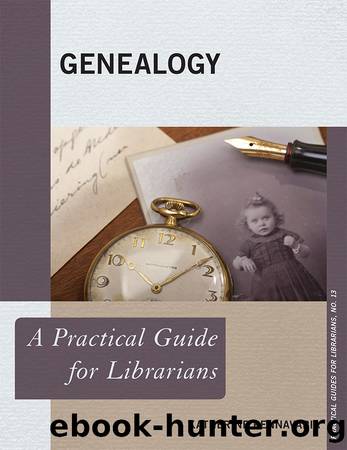Genealogy by Katherine Pennavaria

Author:Katherine Pennavaria [Pennavaria, Katherine]
Language: eng
Format: epub
Publisher: Rowman & Littlefield Publishers
Published: 2015-06-15T00:00:00+00:00
Figure 4.2. Census record showing enumeratorâs misspelling of the name Dundovich.
This man and his spouse were named Mike and Manda Dundovich, but the surname recorded by the enumerator is way off the mark. Whichever of them provided the information for the family, he or she undoubtedly pronounced the surname correctly, yet in this record, the name has morphed into Dudandowicz. The enumerator apparently did not hear the name correctly, so this official recordâwhich is supposed to accurately list every person in the nationâfails to do so in this case, leaving the indexers to transfer the incorrect surname into the searchable database, which they did. Someone looking for the Dundovich family would not retrieve this record without patient searching, unless someone had made a correction.
Transcribers and indexers of the census were also copying many numbers in addition to names and other words, and numbers are notoriously difficult to keep in short-term memory, even for a few microseconds. Numbers are easy to transpose and sometimes difficult to read in handwritten script because, unlike lettersâwhich are parts of words that make sense themselves, even if each letter is not clearâan illegible single digit could be anything from zero to nine. The census records therefore can contain incorrect information and can also be indexed incorrectly. This double whammy of difficulty makes finding those records that have mistakes a real challenge.
Vital Records
The legibility and even comprehensibility of birth, death, and marriage records depended on whether the original record creator could understand the person whose information was being taken down. Genealogists who work with vital records for non-English-speaking immigrants in large cities will be familiar with this problem. For example, in 1905, a recently arrived Italian immigrant gave birth in a Chicago tenement home. The birth attendant was a Polish midwife who lived nearbyâno other medical assistance was at hand. Although she had been in the United States longer than her clients, the midwife spoke very little English and not more than a few words of Italian, so communicating with the parents was difficult. The birth record that she created reflects that linguistic barrier (see figure 4.3).
Download
This site does not store any files on its server. We only index and link to content provided by other sites. Please contact the content providers to delete copyright contents if any and email us, we'll remove relevant links or contents immediately.
Twilight of the Idols With the Antichrist and Ecce Homo by Friedrich Nietzsche(18452)
CHERUB: The Recruit by Robert Muchamore(2185)
CHERUB: The Fall by Robert Muchamore(2012)
I Capture the Castle by Dodie Smith(1938)
CHERUB: Man vs Beast by Robert Muchamore(1919)
The Edge of the Abyss (Sequel to The Abyss Surrounds Us)(1729)
Black Genesis by Robert Bauval(1558)
all by Unknown Author(1509)
A Brief History of Everyone Who Ever Lived by Adam Rutherford(1487)
Where Do I Start? by Chase Taylor Hackett(1245)
Spook Street (Slough House) by Mick Herron(1218)
2016 Baby Names Almanac(1182)
How to Argue With a Racist by Adam Rutherford(1158)
Painfully Rich by John Pearson(1143)
Genetics by Adam Rutherford(1132)
2011 Baby Names Almanac(1060)
Black Hawk Down by Mark Bowden(1054)
Life After Life: A Novel by Kate Atkinson(1045)
It's All Relative by A. J. Jacobs(1024)
